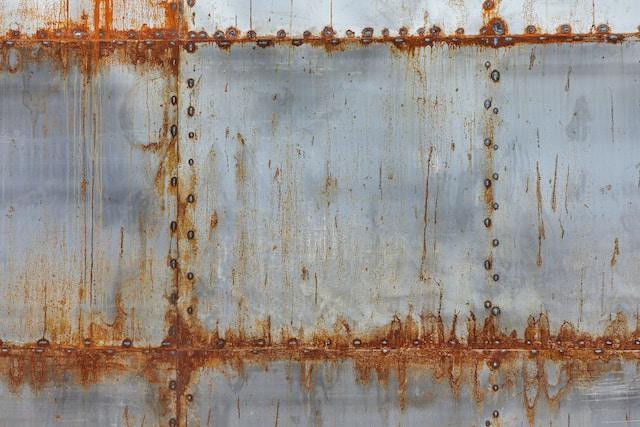Reviving Metal Surfaces with Laser Rust Removal: A Cutting-Edge Solution
Laser rust removal is a modern and highly effective method for eliminating rust and corrosion from various surfaces. It is an innovative and precise technique that uses high-intensity laser light to strip away rust, oxides, and other contaminants from metals, without causing damage to the underlying material.
Here's how laser rust removal works:
- Laser Source: A high-powered laser, typically a pulsed or continuous-wave laser, is used as the energy source for the process. The choice of laser depends on the specific application and the type of rust or corrosion being removed.
- Absorption of Laser Energy: The laser emits a focused beam of light that is directed onto the rusted surface. The rust or corrosion absorbs the laser energy, causing it to heat up rapidly.
- Rapid Heating: The energy from the laser heats the rust to extremely high temperatures within a very short timeframe. This rapid heating leads to the vaporization and breakdown of the rust and oxide layers.
- Removal of Rust: As the rust and oxides turn into vapor, they are effectively removed from the surface. This process is highly controlled, and it can be precisely targeted to the affected areas, leaving the underlying material unaffected.
- Safety Precautions: Laser rust removal requires appropriate safety measures, including protective eyewear and proper ventilation, to ensure the safety of the operator and anyone nearby.
Benefits of laser rust removal include:
- Precision: Laser systems can be adjusted to target only the rusted areas, leaving the unaffected material intact.
- Minimal Surface Damage: Unlike traditional methods such as sandblasting or chemical treatments, laser rust removal is non-abrasive and doesn't harm the substrate.
- Environmentally Friendly:Produces minimal waste and is a more environmentally friendly option compared to some chemical processes.
- Efficiency: It is a quick and efficient process, which is ideal for industrial applications where time is a crucial factor.
- Versatility: Can be applied to various metals and surfaces, including steel, aluminum, and even delicate historical artifacts.
However, laser rust removal also has some limitations and considerations:
- Cost: Laser equipment and the expertise required to operate it can be expensive.
- Safety: As with any laser operation, safety precautions are essential, and operators should be properly trained.
- Material Compatibility: May not be suitable for all materials, and the settings must be carefully adjusted to avoid damage.
- Surface Contamination: The vaporized rust and oxides must be properly contained to prevent environmental contamination.
Laser rust removal is a powerful and precise technique for rust and corrosion removal, particularly in industrial and restoration applications. It offers several advantages over traditional methods, but it should be used with care and expertise.
Where laser rust removal is used in practice
Laser rust removal is used in various practical applications across different industries where precision and efficiency in rust and paint removal are essential.
Some common applications of laser rust removal include:
- Aerospace: Laser rust removal is employed to remove rust and paint from aircraft components. The aerospace industry values the precision and non-abrasive nature of laser cleaning to avoid damage to critical parts.
- Automotive: Automotive manufacturers and restoration enthusiasts use laser rust removal for tasks like stripping paint and rust from car bodies, chassis, and components. It is especially useful for preserving the structural integrity of classic and vintage cars.
- Marine: The maritime industry uses laser cleaning to remove rust and marine growth from ship hulls and other metal structures. It's a more environmentally friendly alternative to traditional abrasive methods, which can generate waste and pollution.
- Construction: Is used in the construction sector to clean and prepare steel structures before welding and painting. It ensures a clean, rust-free surface for structural integrity and longevity.
- Cultural Heritage Restoration: Laser cleaning is crucial in the restoration of historical artifacts, sculptures, and monuments. It allows for precise and gentle removal of rust, dirt, and contaminants from delicate materials without damaging the original surfaces.
- Manufacturing: In various manufacturing processes, laser rust removal is used for preparing surfaces before welding, coating, or bonding. It ensures that components are free from rust and contaminants to meet quality and safety standards.
- Industrial Maintenance: In industrial facilities, machinery and equipment are subject to rust and corrosion. Laser cleaning is used for routine maintenance to extend the lifespan of equipment and ensure optimal performance.
- Military and Defense: The military employs laser rust removal for maintenance of military equipment, such as tanks, aircraft, and naval vessels, to ensure operational readiness.
- Oil and Gas Industry: The oil and gas sector uses laser cleaning for rust and corrosion removal on pipelines, rigs, and other equipment to prevent structural degradation and improve safety.
- Railroad Maintenance: Is used in the maintenance and restoration of railway components, including train cars, tracks, and bridges.
- Energy Sector: The energy industry employs laser cleaning in power plants and substations to remove rust from critical equipment and infrastructure.
- Renewable Energy: Is used in the manufacturing and maintenance of renewable energy systems, such as wind turbines and solar panels.
Laser rust removal is valued for its precision and efficiency, particularly in industries where maintaining the integrity and safety of metal structures and components is essential. It is increasingly becoming a preferred method in applications where traditional abrasive techniques might be less suitable due to the potential for substrate damage or environmental concerns.

